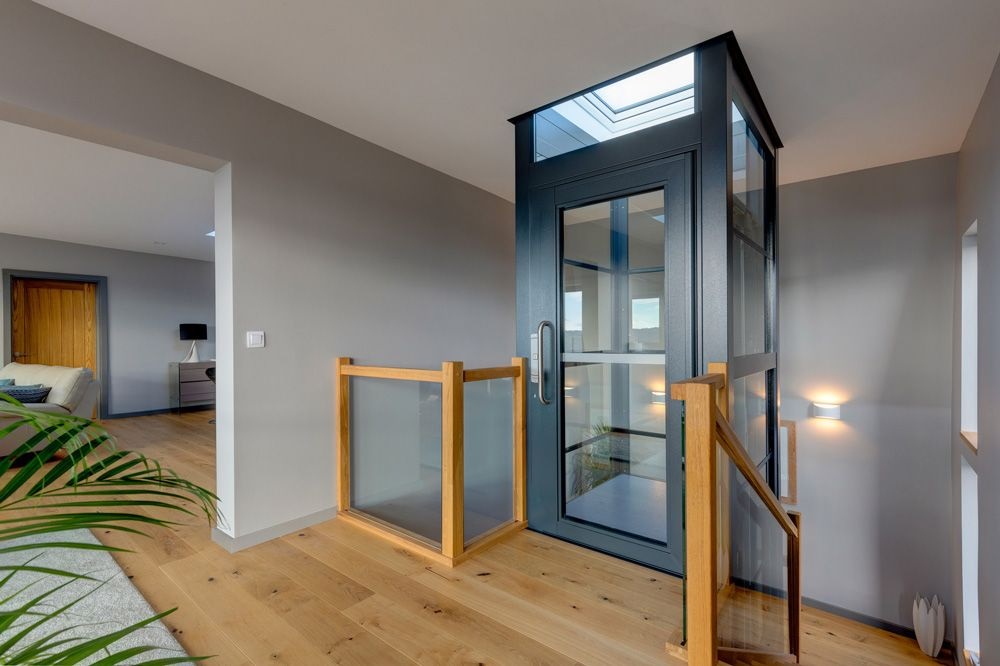In the quest for creating an inclusive and accessible living space, the need for innovative solutions becomes paramount. One such solution that has revolutionized home accessibility is the wheelchair lift. As we delve into the world of mobility aids, this article explores the different types of wheelchair lifts for homes, the compelling reasons to choose a wheelchair lift, the individuals who benefit from this technology, the mechanics behind its operation, and crucial considerations for those contemplating the purchase of a wheelchair lift for home use.
Types of Wheelchair Lifts for Homes
Vertical Platform Lifts
Vertical platform lifts are a popular choice for both residential and commercial settings. Installed adjacent to existing staircases or at the entrance of a home, these lifts move vertically, allowing wheelchair users to traverse between different levels effortlessly. Their compact design and ease of installation make them a versatile solution for various home layouts.
Inclined Platform Lifts
Inclined platform lifts are ideal for homes with staircases, providing a safe and convenient way for wheelchair users to navigate different floors. These lifts follow the incline of the staircase, ensuring a seamless and efficient ride. With their foldable platforms, inclined platform lifts are space-saving and blend seamlessly with the home environment.
Portable Wheelchair Lifts
Portable wheelchair lifts offer a flexible solution for those seeking temporary or movable accessibility options. These lifts can be moved and set up as needed, making them suitable for homes where permanent installations may not be feasible. Portable lifts are often used for providing access to raised platforms or outdoor areas.
Why Choose a Wheelchair Lift for Home?
Enhanced Accessibility
The primary and most compelling reason to choose a wheelchair lift for the home is to enhance accessibility. For individuals with mobility challenges, navigating stairs and uneven surfaces can be a significant obstacle. A wheelchair lift provides a seamless and safe solution, ensuring that every part of the home is accessible to all residents.
Independence and Empowerment:
Wheelchair lifts empower individuals with mobility impairments to lead independent lives. The ability to move between different levels of the home without assistance fosters a sense of autonomy and self-reliance. This newfound freedom contributes to an improved quality of life and overall well-being.
Customizable Solutions
Wheelchair lifts are available in various configurations to suit the specific needs of each home. Whether it’s a vertical lift for a single-level residence or an inclined lift for a multi-story home, these solutions can be customized to seamlessly integrate with the existing architecture. This adaptability ensures that homeowners can choose a wheelchair lift that aligns with their unique requirements.
Who Needs a Wheelchair Lift for Home?
Individuals with Mobility Challenges
The primary beneficiaries of wheelchair lifts are individuals with mobility challenges, including those who use wheelchairs or mobility scooters. Whether due to age, injury, or a medical condition, anyone facing difficulty in climbing stairs or traversing between different levels can significantly benefit from the installation of a wheelchair lift at home.
Seniors Aging in Place
As the aging population grows, more seniors are choosing to age in place. For seniors who may experience reduced mobility over time, a wheelchair lift becomes an invaluable tool for maintaining independence and staying connected to every area of their home.
Temporary Disabilities
Wheelchair lifts also cater to those with temporary disabilities or injuries. In situations where mobility is temporarily compromised, such as during post-surgery recovery, a wheelchair lift ensures continued access to all areas of the home without the need for major modifications.
How Does a Wheelchair Lift Work?
Wheelchair lifts operate on a straightforward principle, providing a safe and reliable means of transporting individuals with mobility challenges between different levels of a home. The specific mechanics can vary based on the type of lift, but the fundamental operation remains consistent.
Vertical Platform Lifts
The user wheels onto the lift platform.
The platform ascends or descends vertically using a hydraulic or electric system.
Safety features such as guardrails and sensors ensure a secure ride.
Upon reaching the desired level, the user can easily roll off the lift platform.
Inclined Platform Lifts
The wheelchair user positions themselves on the lift platform at the base of the staircase.
The platform follows the incline of the staircase, moving smoothly along a rail system.
Safety mechanisms, including brakes and sensors, guarantee a secure journey.
The user disembarks at the destination, and the platform can be folded or parked to maximize space.
Portable Wheelchair Lifts
Portable lifts typically feature a compact and lightweight design.
The user positions their wheelchair or scooter on the lift platform.
The platform is raised to the desired height using a manual or electric lifting mechanism.
Once the lift reaches the desired level, the user can safely roll off the platform.
Portable lifts are then disassembled or folded for easy storage and transport.
Things to Consider Before Purchasing a Wheelchair Lift for Home:
Home Layout and Space
Assess the layout and available space in your home to determine the most suitable type of wheelchair lift. Consider factors such as staircases, entry points, and the overall design of your residence.
User Requirements
Understand the specific needs and preferences of the wheelchair user. Consider factors such as weight capacity, platform size, and ease of use to ensure that the chosen lift meets the user’s requirements.
Installation and Maintenance
Explore the installation requirements and maintenance considerations associated with different wheelchair lifts. Some lifts may require professional installation, while others offer user-friendly setups. Regular maintenance is crucial to ensure optimal performance.
Safety Features
Prioritize safety features, including guardrails, sensors, emergency stop buttons, and non-slip surfaces. A reliable wheelchair lift should adhere to safety standards and provide peace of mind to both users and caregivers.
Regulatory Compliance
Check local building codes and regulations to ensure compliance with safety standards. Obtain necessary permits and approvals before installing a wheelchair lift for home to avoid legal complications.
Budget Considerations
Determine your budget for a wheelchair lift, taking into account not only the initial purchase cost but also potential installation and maintenance expenses. Compare prices and features to make an informed decision.
Conclusion
As we navigate the terrain of home accessibility, the wheelchair lift emerges as a transformative solution, breaking down barriers and fostering independence for individuals with mobility challenges. Choosing the right wheelchair lift involves a thoughtful consideration of home layout, user requirements, safety features, and budget considerations.
In the realm of inclusive living, the wheelchair lift stands as a testament to the progress of assistive technology, ensuring that every individual, regardless of mobility limitations, can fully enjoy the comfort and convenience of their home. So, embark on the journey to enhance accessibility, and let the freedom of movement redefine the way you experience your living space with a thoughtfully chosen wheelchair lift for your home.













Comments